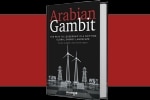Executive summary
Land in the Gulf Cooperation Council (GCC)1 countries has traditionally been a means of safeguarding wealth. Both public- and private-sector owners held property, often undeveloped, for decades. Its value increased, yet they had little need to unlock that value. Today, lower oil prices, fiscal pressure on state budgets, and geopolitical instability are encouraging governments, institutions, family businesses, and other owners to tap into dormant land holdings as a source of capital. New taxes on dormant land are an additional factor for private owners.
There are five principal approaches to unlock value from such holdings:
- mortgaging the property or selling it and subsequently leasing it back
- leasing the property under a long-term, build-operate-transfer (BOT) arrangement
- selling the property outright
- contributing land to a development project with a partner
- contributing land and equity to a development project, and potentially operating the project
The internal rate of return (IRR) for these options ranges from 2 percent to 15 percent or more. However, with increasing potential gains come increasing risk and complexity. Some of these options are more relevant for private-sector owners (such as outright sales), yet all require a clear strategy and an understanding of the capabilities that an owner can bring to the transaction.
Thus far, some owners have begun to raise capital through their land, yet most have applied an ad hoc solution, evaluating individual investor offers as they come in. Instead, owners need to be far more proactive and strategic about looking at their entire land bank. They also need to take their time, find the right partner and deal, structure arrangements to retain control, and consider all financing mechanisms and exit strategies.
Growing economic pressure
Throughout the countries of the GCC, large swaths of land have been dormant and underexploited by the governments and private entities that own it, accruing value that has yet to be unlocked. That kind of buy-and-hold mind-set made sense in the past, but current economic conditions in the region call for a new approach: unlocking value from those holdings.
For the private-sector owners of land banks in the region, primarily large family businesses and conglomerates, land has been used for speculative trading, as collateral for debt to fuel their core businesses, or to accumulate and safeguard wealth. Similarly, governments have treated land as a vehicle for building the country or for meeting the needs of constituents. For example, governments often grant land to national developers, which then build housing, schools, hospitals, or other infrastructure needed for their growing populations.
Over the past several years, however, growing economic pressure is changing the context. The GCC has been hit by lower oil prices, which are currently stabilizing at levels that are too low to support historical government spending. In addition, political uncertainty has risen, due to ongoing conflicts and geopolitical shifts. These forces require that local landowners, governments, and private institutions alike start generating more value from dormant land banks.
Among governments, that value resides in the means of generating income, as well as in the potential for developing land to better meet the needs of its citizens, such as social infrastructure projects, mega-transportation initiatives, or other large-scale objectives. In Saudi Arabia, for instance, the government is consolidating all its strategic land holdings to be used in major government-led development projects. Municipalities and other government agencies are also setting up land investment divisions and planning projects, either on their own or through public–private partnerships (“Two examples of land management”). Transportation authorities and agencies in Doha and Riyadh are also looking to extract value from land adjacent to new metro lines. A common theme with these projects is that governments will rely heavily on private-sector partners.
Two examples of land management
In 2010, the U.K. government set up a Government Property Unit (GPU) to capitalize on idle or underutilized land and property across civil service facilities. The unit has central oversight over all government land and property, and it works collaboratively with other government departments to improve the efficiency of state-owned real estate, sell off or lease surplus property, boost economic growth, and create new housing.
Under the program, the GPU helped raise £1.4 billion (US$2.3 billion) by selling off surplus property, and it reduced the operating costs of the government’s portfolio by £625 million ($1 billion) a year between 2010 and 2014. The unit has even launched the Government Property Finder,2 a site that allows the U.K. government to more efficiently market its surplus buildings and land to potential buyers or lessors.
Similarly, in Western Australia, where the state owns 92 percent of all land (other than freehold property owned by residents), the government set up a Department of Lands with some 200 employees and a mandate to oversee all property in the government’s portfolio. For example, the department can sell surplus land and buildings to unlock capital and reduce state debt. It can also acquire land for residential, industrial, conservation, and community needs, or to develop transportation corridors.
In September 2014, the department identified the 20 most significant assets to divest as part of the government’s broader strategic needs. By prioritizing in this way, the program generated AU$133.2 million ($124 million) in revenue in one year by selling some of those assets.
For large family businesses, conglomerates, and other institutions that own land, the goal is the same: to commercially exploit and develop dormant land. However, they are doing so to solve different underlying problems. These players need to offset or hedge against slower growth of their core businesses, diversify their portfolios, and avoid taxes on dormant or underexploited land. In Saudi Arabia, for example, a “white land tax,” introduced in March 2017, charges owners 2.5 percent of the land’s value unless they develop it within 12 months.
Growing economic pressure is changing the context.
Conclusion
Long gone are the days when governments and private-sector entities could buy land and leave it dormant. Economic pressures, new taxes on undeveloped land, and other challenges are pushing these owners to exploit their land banks in order to raise capital. Rather than sitting back and waiting for offers from investors, landowners should adopt a more proactive and strategic approach. They have many options, and those that take the time to explore every avenue will generate far greater value.
1 The GCC countries are Bahrain, Kuwait, Oman, Qatar, Saudi Arabia, and the United Arab Emirates.
2 Government Property Unit, “Find government property and land to rent or buy”.
Contact us


















Menu